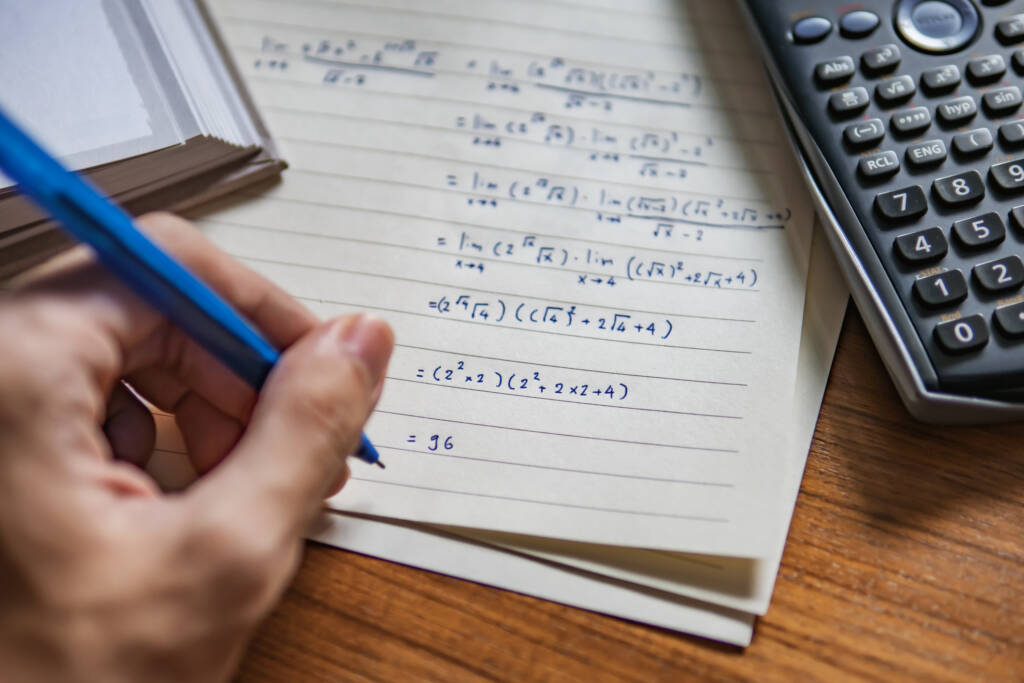
AP Statistics

This course is designed to provide college-level instruction on the concepts and tools for working with data. Students collect and analyze data and draw conclusions based on real-world information. The course challenges students to explore patterns, think critically, use a variety of tools and methods, and report their findings and conclusions.
Major Topics and Concepts
Segment I:
Exploring Data
- 01.00 Segment One Diagnostic Test
- 01.01 Classifying Variables
- 01.02 Describing Data
- 01.03 Displaying Data
- 01.04 Mid-Module Check
- 01.05 Measuring Position Project
- 01.06 Normal Distribution
- 01.07 Exploring Data Discussion-Based Assessment
- 01.08 Exploring Data Test
Exploring Relationships
- 02.00 Introduction to Exploring Relationships
- 02.01 Scatterplots and Correlation
- 02.02 Least-Squares Regression Part One
- 02.03 Mid-Module Check
- 02.04 Least-Squares Regression Part Two
- 02.05 Transformations
- 02.06 Exploring Relationships Discussion-Based Assessment
- 02.07 Exploring Relationships Test
Collecting Data
- 03.00 Introduction to Collecting Data
- 03.01 Sampling and Surveys
- 03.02 Experiments Part One
- 03.03 Mid-Module Check
- 03.04 Experiments Part Two
- 03.05 Correlation Versus Causation
- 03.06 Collecting Data Discussion-Based Assessment
- 03.07 Collecting Data Test
Probability and Random Variables
- 04.00 Introduction to Probability and Random Variables
- 04.01 Randomness and Simulations Project
- 04.02 Probability
- 04.03 Mid-Module Check
- 04.04 Random Variables
- 04.05 Binomial Random Variables
- 04.06 Geometric Random Variables
- 04.07 Segment One Review and Discussion-Based Assessment
- 04.08 Segment One Exam
Segment II:
Sampling Distributions and Confidence Intervals
- 05.00 Segment Two Diagnostic Test
- 05.01 Sampling Distributions and Proportions
- 05.02 Sample Means
- 05.03 Mid-Module Check
- 05.04 Confidence Intervals for Proportions
- 05.05 Confidence Intervals for Means Project
- 05.06 Sampling Distributions and Confidence Intervals Discussion-Based Assessment
- 05.07 Sampling Distributions and Confidence Intervals Test
Proportions
- 06.00 Introduction to Proportions
- 06.01 Hypothesis Testing—One Proportion
- 06.02 Errors, Power, and Significance
- 06.03 Mid-Module Check
- 06.04 Confidence Intervals—Two Proportions
- 06.05 Hypothesis Testing—Two Proportions
- 06.06 Proportions Discussion-Based Assessment
- 06.07 Proportions Test
Means and Slope
- 07.00 Introduction to Means and Slope
- 07.01 Hypothesis Testing—One-Sample Mean
- 07.02 Comparing Two Means
- 07.03 Mid-Module Check
- 07.04 Matched Pairs Project
- 07.05 Linear Regression and Interval for Slope
- 07.06 Means and Slope Discussion-Based Assessment
- 07.07 Means and Slope Test
Chi-Square and Summary
- 08.00 Introduction to Chi-Square and Summary
- 08.01 Chi-Square Goodness-of-Fit Test
- 08.02 Chi-Square Test for Inference
- 08.03 Mid-Module Check
- 08.04 Exploring Data, Sampling, and Experimentation Review
- 08.05 Anticipating Patterns and Statistical Inference Review
- 08.06 Segment Two Review and Discussion-Based Assessment
- 08.07 Segment Two Exam
Course Materials
AP Course & Exam Registration Requirements
College Board requires students to register for AP exams no later than November 13th (individual schools may set earlier deadlines).
All VLACS AP students are required to enroll in the “course only” section in My AP. Instructions for joining My AP will be posted on each VLACS course page and instructors are available to help with this process.
Students who plan to take the corresponding AP exam must arrange to take the exam at a local school that administers it. To register for an AP Exam, the local school will enroll the student in an “exam only” section in My AP. Students should follow these steps:
- Search for a local test site through this resource of contact AP Services for Students at 888-225-5427 [email protected]. That office can give you contact information for local AP coordinators who may be willing to test outside students. Students are then responsible for contacting coordinators on that list to see if one can arrange to test for you. You should do this no later than October 2nd. Note that schools may have their own local deadlines for receiving requests from outside students to test at their school so we recommend doing this as soon as possible
- The AP coordinator who agrees to assist you must provide a join code for an “exam only” section in My AP. You’ll use the join code to join the section so that the AP coordinator can order your exam.
Please note that, if a school allows a student to register after the 11/13 deadline, there will be a $40 late exam fee. There will also be a $40 canceled/unused exam fee if a student registers and then cancels his/her exam or if the student does not show up on test day.
More information is available on the College Board’s website: https://apstudents.collegeboard.org/
Competencies
Representing and Analyzing Data
Students will demonstrate an understanding of representing and analyzing data by analyzing data sets, explaining data graphically and numerically, explaining percentiles as representation of data, and evaluating data distributions.
Data Relationships
Students will demonstrate an understanding of data relationships by explaining scatterplots and correlation, explaining least-square regressions, and evaluating transformations.
Data Collection
Students will demonstrate an understanding of data collection by analyzing samples and surveys, evaluating experimental design, and differentiating between correlation and causation.
Probability and Random Variables
Students will demonstrate an understanding of probability and random variables by describing randomness and simulation, solving problems involving probability, and differentiating random variables.
Sampling Distributions and Confidence Intervals
Students will demonstrate an understanding of sampling distributions and confidence intervals by analyzing sampling distributions and creating confidence intervals.
Hypothesis Testing
Students will demonstrate an understanding of proportions by creating a hypothesis test, constructing confidence intervals, and differentiating statistical conclusion errors.
Means and Slope
Students will demonstrate an understanding of means and slope by creating a hypothesis test, calculating the difference of two means, explaining a matched pairs test, and interpreting linear regressions and confidence intervals.
Chi-Square
Students will demonstrate an understanding of chi-square by explaining the goodness-of-fit test and interpreting the test for independence.
